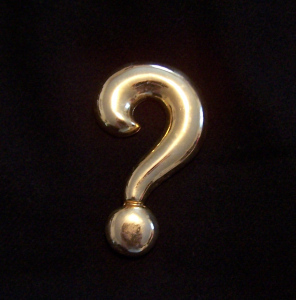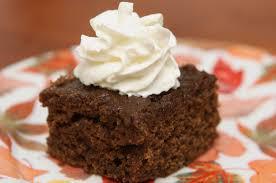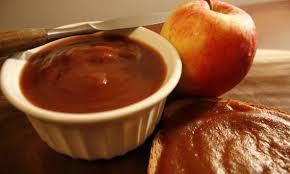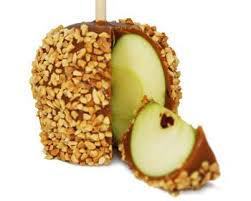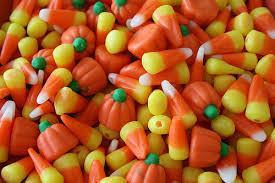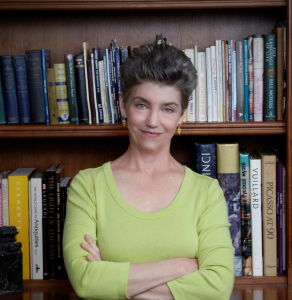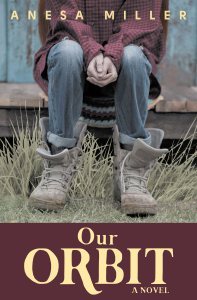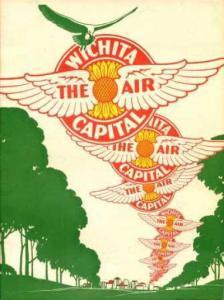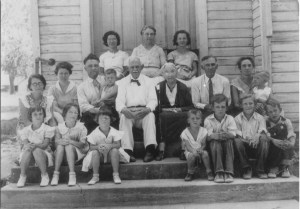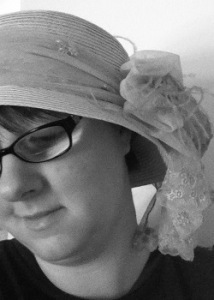Leta P. Hawk's Blog, page 22
August 27, 2015
The Question That Shall Not Be Asked, Part 2
Well, two blog posts in one week. Isn’t that one of the signs of the Apocalypse? Anyway…
Earlier this week, I posted about the differences between my religious beliefs and the experiences I’ve had with the paranormal, and the tensions that arise because of those differences. I also hinted that some of the experiences Kyrie Carter has in my paranormal mystery series are inspired by my own experiences.
Well, my muse took off running with that blog post, and I wrote a scene in which Kyr and her love interest Spook Steele are having a bit of a get-to-know-you chat. The conversation starts out light-hearted and not very deep–what is your family like, what do you do for a living, what kinds of things did you like as a child, etc. But then Spook asks Kyr a seemingly-innocent question that she isn’t quite prepared for. I’d like to share that scene with you, my readers, just to see what you think. I haven’t decided where this scene will land yet, and obviously the conversation isn’t finished, but it will give you an idea of what Kyr is struggling with in her quest to figure out her life.
For the next hour, we talked. Spook told me more about his sister Katie and about his parents, and I told him about my brothers and their families. He talked about working with his father as a landscaper, and I told him about my adventures in the children’s library. We shared memories about our childhoods, our school days, and our wildest dreams. As we played twenty questions and got to know each other, I gradually relaxed again and just enjoyed getting to know the man I had fallen so unexpectedly for.
During a lull in the conversation, I slipped my arms around his waist and laid my head on his shoulder. He began lazily stroking my hair as though he were petting a cat. I sighed contentedly and allowed myself to melt into him, feeling a peacefulness I hadn’t felt in a long time.
After a long silence, Spook asked, “Mind if I ask you a question?”
I giggled drowsily. “Isn’t that what we’ve been doing?”
He laughed too. “I guess it is, now, isn’t it?” After another pause, he asked, “What got you interested in paranormal investigation? Was it Project Boo-Seekers, or that scary old woman you saw in your bedroom?” Although he attempted to sound light-hearted, I could tell it was a serious question.
My sleepiness vanished immediately; I hadn’t expected that question, and I wasn’t prepared to answer it. “I could ask you the same question.” My voice trembled, contradicting the flippant tone I’d attempted.
Spook’s hawkish eyes fixed on me, and I knew he sensed my hesitation in answering. “You could, but I asked you first, Kyr m’dear.” He took my hand and stroked it with his thumb as he always seemed to do when we had serious conversations.
My eyes drifted down to our joined hands, down to the sneakers lying in front of the couch, up to the corner of the ceiling where I’d missed a cobweb, looking everywhere but into his eyes. I had never told anyone, not even JoEllyn or Aunt Julia, what it was that had pushed my fascination with ghosts over the edge into the desire to study them, to investigate hauntings. True, it had partly been that first experience, as well as all the other experiences I’d had. And Project Boo-Seekers had opened my eyes to the possibility. But none of those reasons was the ultimate catalyst. Spook’s thumb became more insistent against my hand, and I knew he was waiting for an answer. “No, it wasn’t either of those things…exactly,” I hedged.
“Well, then what was it?” All the teasing was gone from his voice, and I knew I had his complete attention.
I met his eyes and swallowed hard before responding with a question of my own. “Can someone who didn’t believe in ghosts become a ghost himself when he dies?”
His thumb ceased its movements, and his eyes widened as the question settled over him. “That’s not a rhetorical question, is it?” he asked softly.
Unexpected tears came to my eyes as I shook my head. “Well, can they?” I couldn’t keep the desperation out of my voice.
Spook let his head fall against the back of the couch, and he withdrew his hand from mine to stroke his beard in agitation. “Kyr, I…really don’t know.” His concerned eyes met mine once more. “Why do you ask?”
I leaned forward to rest my elbows on my knees, half wishing I hadn’t posed the question that I was now reluctant to answer. Still, if anyone would understand, I knew he would. “Not long after Daddy died, I started noticing…things…happening around my place. Nothing scary, just…footsteps outside my bedroom late at night, feeling as though someone were looking over my shoulder, that kind of thing.” I glanced over at the framed picture of my parents sitting on top of the coffee table. My voice shook as I continued. “What made me start thinking it was Daddy was that I began to catch whiffs of his aftershave. On the one hand, I wanted to believe he was checking on me, letting me know he was okay, but on the other hand, it didn’t make sense, you know?”
“Because your dad didn’t believe in ghosts.”
I nodded. “He believed that when you die, you go one of two places. He always told me there’s no in-between, and there’s no coming back to earth. Ever.” My insides knotted up and began trembling, and soon that trembling worked its way to the rest of my body. I clasped my hands together to stop it. “Could it have been my dad? Even if he didn’t believe in ghosts, could he have come back as one?”
Part of me wished I hadn’t asked the question, recalling other times in my life when I’d asked such things. I’d been called on the carpet more than once, first by the youth pastor at my home church, and then by Daddy when he heard I’d been asking about the paranormal—the occult, as they called it—and had found verses in the Bible that supported my beliefs. Now, as then, I silently cursed my curiosity, wishing I could just accept what I was told and move on. But I couldn’t.
Do you have any unanswerable questions? Leave a comment if you’d like to share.


August 24, 2015
The Questions That Shall Not Be Asked, Part 1
I’ve long said that writing is a way for me to process the issues and burning questions that I can’t or don’t want to talk about with—gulp—real people. Friends and family who know me well and who have read my paranormal mystery books have commented about how much Kyrie Carter sounds like me. They have noticed that she has a lot of the same foibles, character traits, and personal struggles that I have.
One struggle that has been dancing around the ring but has not as yet been fully introduced into the story is the struggle between Kyr’s fascination with the paranormal and her religious upbringing. It is that struggle that has at last stepped forward and loudly proclaimed that it is time to be dealt with.
I attended a writers conference this past weekend, hoping to learn some new tidbits, and perhaps to share some of the things I’ve learned over this past year since self-publishing my first book and subsequently getting a publisher. What I didn’t expect was having the session on Memoirs and the session on Characterization collide in my brain and shatter Pandora’s proverbial box, leaving me with a burning question that screams to be written into a scene between Kyr and her now-boyfriend Spook Steele.
As many of my friends and some of my family know, I had my first paranormal encounter at the tender age of four, in the back bedroom of the Victorian duplex where I lived during my preschool and early elementary years. As I lay awake one night, while my seven-year-old brother snored in the twin bed across the room, my eyes wandered to the foot of my bed where, to my surprise, stood an elderly woman who stared silently back at me. Her dress was unfamiliar to me; it wouldn’t be till a few years later when I would first see the late-nineteenth-century style of dress and recognized it as that which she wore. Thinking someone might be visiting my parents, but wondering why they would choose such a late hour to do so, I asked, “Who are you?”
The strange woman said nothing, but simply ceased to be there. She didn’t fade away or walk through a wall to exit; she just vanished.
Realizing that I had just seen a ghost, I did what any other four-year-old would have done: I screamed my head off, waking my brother and bringing my parents at a run to our bedroom. Of course, they brushed it off as a bad dream, or my imagination, or anything but what I knew was true. You see, there had been other indications that we weren’t alone on our side of the house, mostly in the form of voices that came from nowhere and the occasional catching movement at the corner of my eye.
The incident was soon forgotten by everyone but me, and within my immediate family, it was never talked about again. Still, it came to mind many, many times over the years, and it finally found a home as the catalyst for Kyr’s initiation to the world of ghost hunting.
As for the clash with religious upbringing, well, that fine point is more of Kyr’s world than mine. The church I grew up in was for the most part open and accepting of people’s experiences, whatever they might be. Now, that being said, I still didn’t find much commiseration with what I had seen, but no one shamed me or told me I was embracing the devil. My own personal struggle between my experience and my beliefs did not come until my adult years, after I had gotten married and began attending a different church in a different denomination with my husband.
It also coincided with the advent of the many paranormal investigation shows that are so common now. When I first saw the show Ghost Hunters, I was skeptical and a bit incredulous. Although I was a firm believer in ghosts and rarely questioned anyone who said they’d experienced one, I looked askance at this crazy idea of a show. Did people really go around dark houses at night trying to talk to these entities? How strange and, yes, how stupid.
Still, I watched the show and began to understand their techniques and their jargon. I learned the difference between residual hauntings and intelligent hauntings, and I made note of some of the situations that might be mistaken for paranormal experiences, such as plumbing problems or sensitivity to EMFs.
Where I got myself into trouble was on social media (there’s no surprise, right?). In those days, many of the celebrity Facebook pages had the option of discussions; a member of the group could post a topic for other members to debate or comment on. I joined many of these discussions on Jason Hawes’ page, and started a few of my own. Now, to make this long story a bit shorter, someone at my current church saw the things I was posting. Since the beliefs I held (the fact that ghosts exist and may or may not be some residual energy from living persons) differed from my church’s beliefs (the only “ghost” is the Holy Ghost, and all other spirits are either angels or demons), I was called into a meeting with one of the pastors. I will not dredge up old grievances and chronicle everything that was said in that meeting, but suffice it to say, it did not end well. My husband (who does not share in my beliefs or experiences) and I left that church and are attending another.
Suffice it to say that I still have questions about the paranormal—not just ghosts, but also things like UFOs, cryptids, and all sorts of psychic phenomena—but I am much more guarded in whom I share my experiences with. I still watch some of the paranormal shows, and I still search the Bible trying to understand the differences between my views (and my interpretation of Scripture) and the church’s. I believe that continued struggle largely influences many of the things Kyr experiences in my stories. I don’t think I will ever really reach a conclusion, but as with many other issues I have had to work through, it does certainly help to be able to write them down in an environment where I can freely express and explore them.


The Questions That Shall Not Be Asked
I’ve long said that writing is a way for me to process the issues and burning questions that I can’t or don’t want to talk about with—gulp—real people. Friends and family who know me well and who have read my paranormal mystery books have commented about how much Kyrie Carter sounds like me. They have noticed that she has a lot of the same foibles, character traits, and personal struggles that I have.
One struggle that has been dancing around the ring but has not as yet been fully introduced into the story is the struggle between Kyr’s fascination with the paranormal and her religious upbringing. It is that struggle that has at last stepped forward and loudly proclaimed that it is time to be dealt with.
I attended a writers conference this past weekend, hoping to learn some new tidbits, and perhaps to share some of the things I’ve learned over this past year since self-publishing my first book and subsequently getting a publisher. What I didn’t expect was having the session on Memoirs and the session on Characterization collide in my brain and shatter Pandora’s proverbial box, leaving me with a burning question that screams to be written into a scene between Kyr and her now-boyfriend Spook Steele.
As many of my friends and some of my family know, I had my first paranormal encounter at the tender age of four, in the back bedroom of the Victorian duplex where I lived during my preschool and early elementary years. As I lay awake one night, while my seven-year-old brother snored in the twin bed across the room, my eyes wandered to the foot of my bed where, to my surprise, stood an elderly woman who stared silently back at me. Her dress was unfamiliar to me; it wouldn’t be till a few years later when I would first see the late-nineteenth-century style of dress and recognized it as that which she wore. Thinking someone might be visiting my parents, but wondering why they would choose such a late hour to do so, I asked, “Who are you?”
The strange woman said nothing, but simply ceased to be there. She didn’t fade away or walk through a wall to exit; she just vanished.
Realizing that I had just seen a ghost, I did what any other four-year-old would have done: I screamed my head off, waking my brother and bringing my parents at a run to our bedroom. Of course, they brushed it off as a bad dream, or my imagination, or anything but what I knew was true. You see, there had been other indications that we weren’t alone on our side of the house, mostly in the form of voices that came from nowhere and the occasional catching movement at the corner of my eye.
The incident was soon forgotten by everyone but me, and within my immediate family, it was never talked about again. Still, it came to mind many, many times over the years, and it finally found a home as the catalyst for Kyr’s initiation to the world of ghost hunting.
As for the clash with religious upbringing, well, that fine point is more of Kyr’s world than mine. The church I grew up in was for the most part open and accepting of people’s experiences, whatever they might be. Now, that being said, I still didn’t find much commiseration with what I had seen, but no one shamed me or told me I was embracing the devil. My own personal struggle between my experience and my beliefs did not come until my adult years, after I had gotten married and began attending a different church in a different denomination with my husband.
It also coincided with the advent of the many paranormal investigation shows that are so common now. When I first saw the show Ghost Hunters, I was skeptical and a bit incredulous. Although I was a firm believer in ghosts and rarely questioned anyone who said they’d experienced one, I looked askance at this crazy idea of a show. Did people really go around dark houses at night trying to talk to these entities? How strange and, yes, how stupid.
Still, I watched the show and began to understand their techniques and their jargon. I learned the difference between residual hauntings and intelligent hauntings, and I made note of some of the situations that might be mistaken for paranormal experiences, such as plumbing problems or sensitivity to EMFs.
Where I got myself into trouble was on social media (there’s no surprise, right?). In those days, many of the celebrity Facebook pages had the option of discussions; a member of the group could post a topic for other members to debate or comment on. I joined many of these discussions on Jason Hawes’ page, and started a few of my own. Now, to make this long story a bit shorter, someone at my current church saw the things I was posting. Since the beliefs I held (the fact that ghosts exist and may or may not be some residual energy from living persons) differed from my church’s beliefs (the only “ghost” is the Holy Ghost, and all other spirits are either angels or demons), I was called into a meeting with one of the pastors. I will not dredge up old grievances and chronicle everything that was said in that meeting, but suffice it to say, it did not end well. My husband (who does not share in my beliefs or experiences) and I left that church and are attending another.
Suffice it to say that I still have questions about the paranormal—not just ghosts, but also things like UFOs, cryptids, and all sorts of psychic phenomena—but I am much more guarded in whom I share my experiences with. I still watch some of the paranormal shows, and I still search the Bible trying to understand the differences between my views (and my interpretation of Scripture) and the church’s. I believe that continued struggle largely influences many of the things Kyr experiences in my stories. I don’t think I will ever really reach a conclusion, but as with many other issues I have had to work through, it does certainly help to be able to write them down in an environment where I can freely express and explore them.


August 16, 2015
My Top 10 Fall Foods
Yes, I know that Fall—or Autumn, as some prefer to call it—is still a few weeks away, but that doesn’t mean I’m not already there in spirit. I’m already planning my fall wardrobe, picking up new fall décor items, and yes, thinking about all the yummy fall treats. Here is my list of the 10 foods that just scream “Fall Is Here!”
Gingerbread.
With lots of whipped cream. I like gingerbread year-round, but a tasty square of gingerbread on a fall night is just a slice of heaven.
2. Apple cider.
Hot or cold, it doesn’t matter to me. From the very first sip of tangy, spicy apple goodness, I’m carried back to October evenings at our church’s Halloween parties and square dances.
3. Apple butter.
Like a lot of the other foods on this list, apple butter is available here year-round. Still, in my mind (and on my tongue), this just tastes better in the fall.
4. Caramel apples.
Yes, these are also a staple at a lot of the carnivals and summer street fairs where I live, but making my own from apples bought at a roadside stand or local orchard is such a wonderful fall memory.
5. Pumpkin roll.
I may be the weird one here, but I am generally not a big fan of all things pumpkin. Pumpkin pie, pumpkin spice lattes, all those things leave me cold, but a slice of pumpkin roll after a homemade Thanksgiving dinner hits the spot.
6. Hot chocolate.
Again, a favorite that carries over into winter, but a steaming mug of hot chocolate brings back memories of sitting in the stands with the marching band at football games.
7. Candy corn.
And all the other assorted shapes found in a bag of harvest mix. One of my earliest memories of enjoying this candy is in 2nd grade at my class Halloween party.
8. Molasses cookies.
Another treat that isn’t necessarily “autumn-y,” but they make me think of fall because it’s one of the things I start baking as soon as the weather begins to cool off in late September.
9. Cranberry sauce.
No matter what time of year I eat this, it always brings to mind turkey, stuffing, and hot rolls fresh from the oven.
10. Soup/stew.
Yes, I eat soup all year long, but I really start to crave a good, hearty vegetable soup when the first frost coats the ground.
What’s your favorite fall treat? Leave your answer in the comments.


July 21, 2015
Compendium of Biography – Charles Ingalls
 Originally posted on The Cottonwood Tree:
Originally posted on The Cottonwood Tree:
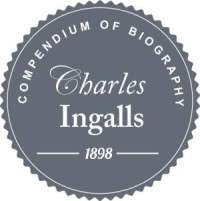 Over the next several months, The Cottonwood Tree will be gradually adding to a series of resources from historical texts, which are relevant to the life and times of Laura Ingalls Wilder. We hope these resources will be of interest to our readers.
Over the next several months, The Cottonwood Tree will be gradually adding to a series of resources from historical texts, which are relevant to the life and times of Laura Ingalls Wilder. We hope these resources will be of interest to our readers.
We are starting with relevant sections from Memorial and Biographical Record, An Illustrated Compendium of Biography, published in 1898 by G.A. Ogle and Company. It contains a “series of biographical sketches of prominent old settlers and representative citizens of South Dakota with a review of their life work”.
But first, a word of advice. You are welcome to use these pieces; but please remember that although the publisher states the articles were derived directly from liaison with individual subjects, the articles themselves are not primary sources. Like most short professional biographies, there is a limit to how long they can be – and the individuals in question…
View original 686 more words


July 20, 2015
It’s Beginning to Look a Lot Like Christmas
Wait, what? It’s not quite the end of July; are you kidding me? In case you think I’m joking, take a look at this photo of a local store that my niece posted on Facebook yesterday:
Aren’t we rushing things just a bit? I mean, I know the whole Christmas in July concept has been around for years, but in my day (cue the old granny voice) that didn’t mean a whole section of department and craft stores displaying Christmas trees, ornaments, lights, inflatables, and whatever else they have in their stock.
This whole rushing holidays really gets on my nerves. It’s a running joke in our family that you know Back-to-School is approaching when the Giant stores put out their Halloween merchandise. Halloween brings Thanksgiving décor (the two or three items they put out) and the beginning of the Christmas onslaught. And everyone knows that the day after Christmas, if they even wait that long, brings the Valentine’s Day merchandise. It’s like we can’t enjoy one holiday at a time without having to worry about the next one, even if it’s a couple months away.
Oh, and don’t even start me on Christmas carols. For years now, most of the radio stations in my area have begun playing the 24/7 Christmas music either on Thanksgiving or Black Friday. That’s not too, too bad, but a couple years ago, one station in its desire to be the first station to go all Christmas started on November 1st. Ridiculous! The kids had hardly had their trick-or-treat buckets sorted out, and we’re listening to “Jingle Bell Rock.”
My question is, how long will it be till the schools catch up with the stores? Maybe we should move their Christmas vacations to coincide with the marketing displays. Hey, we already start school before Labor Day; the kids have maybe 3 days of school and then a 3- or 4-day weekend, so why not? Let’s just have Christmas break in September. Of course, I suppose it will seem odd to sing “Frosty the Snowman” and “Let It Snow, Let It Snow, Let It Snow” when it’s still 85 degrees outside, but hey, we can pretend we’re having Christmas in Florida.
So who’s with me?


June 24, 2015
Author Interview: Anesa Miller
Today, we have with us author Anesa Miller. Anesa will share a bit about herself and her latest book, Our Orbit. Thanks for joining us, and take it away, Anesa!
BIO: Anesa Miller is a recipient of a Creative Writing Fellowship from the Ohio Arts Council. She studied writing at Kenyon College and the University of Idaho. Her work has been published in The Kenyon Review, The California Quarterly, the Southern Humanities Review, and others. Her debut novel, Our Orbit, releases from Booktrope of Seattle in June 2015. Anesa currently divides her time between Ohio and the Pacific Northwest.
Who is Anesa Miller? Tell us a bit about yourself.
I grew up in Wichita, Kansas, which was traditionally called “The Air Capital of the World.” Thanks in part to those local industries, I was obsessed by the Cold War: The Soviet Union wanted to bury us and outlaw private property like toothbrushes and socks! As a girl, I created a comic book about a group of women pilots who smuggled Russian dissidents out of the USSR to Alaska. Later on, Russian literature came to fascinate me. I wanted to write a novel of social issues in the tradition of Tolstoy and Dostoevsky.
What made you decide to write OUR ORBIT?
My novel embodies a lot of my own heritage in fictional form. Both of my parents were the first in their families to attend a university. They came of age in the Depression and went through some very hard times. Nowadays, that era is far enough behind us that we regard it with curiosity. But in my childhood, painful memories were avoided. Over the years, I came to understand that my mother’s parents moved “from pillar to post” and finally lost their home altogether. Their three kids were sent to live with distant relations. Of course, everyone suffered setbacks in those days.
Learning about my background was an enlightening experience. It inspired me to look deeper into genealogy and history. One of the things I discovered is that a tiny village in southeastern Ohio still bears the name of my mother’s family: Warnock village. My ancestors had a dairy farm in that region. I have since visited and found the site of their farm and the church some of them attended, not to mention a beautiful countryside! So understanding our Appalachian roots became an important part of creating the story of OUR ORBIT.
They say that life imitates art, but in my experience, it often works the other way. Have any of your life experiences inspired characters or plot elements in Our Orbit?
Absolutely. The prosperous farming family in my novel represents an ideal part of my heritage that never lost land or homes in the Depression—never had to give up the family dairy. And the poor father who starts a salvage business represents the part that lost everything.
Do you have a favorite scene from Our Orbit? Why do you like that scene?
Naturally, I enjoyed writing all of it! The scene towards the end where the young foster mom, Deanne, makes peace with her own mother meant a great deal to me. Secrets kept for many years are finally acknowledged, and the power of denial passes away. That scene incorporated my own emotions and was redemptive to write.
But another few episodes that I especially enjoyed hark to my high school days. The character Becca Weaver is a good Christian girl, who often turns to her favorite teacher, Mr. Deluca, when she wants advice. Or when she just wants to air her thoughts to a laid-back listener. Mr. Deluca teaches biology and is more liberal than Becca’s family, but there’s a sympathy between the two of them and good communication.
I’ve received some criticism of these scenes: a suggestion that it’s inappropriate for a male teacher to meet with a student in private and hear her “true confessions.” Maybe I grew up in a more innocent time than we live in today. In the novel, I tried to re-create the sense from my own schooldays that, if you can’t tell your family everything, there’s another adult willing to listen. A teacher who understands. I hope most readers will relate to that.
What has being a writer taught you about writing? About yourself? About life?
Journals have always been an important form of self-expression for me. When I have a problem to deal with, or something is gnawing at my subconscious, I hardly know what I think about it until I’ve had a chance to write down some reflections. The move from self-expression to communicative writing—work intended for others to read—makes me feel like a grown-up at last! But both types of writing offer many learning experiences.
And just for fun, what was your favorite toy as a child? Do you still have it?
I loved Madame Alexander dolls—the 8-inch Wendy was my favorite. And when I say I “played with them,” I mean those dolls were swinging from the treehouse, swimming in ponds, and getting their hair cut. No posing in nice dresses inside a glass case for my girls! Few mementos from my childhood are still with me, but sometimes I run across a doll at an antique mall that reminds me of those days. So I’ve started a small new collection.
One other thing just for fun: I noticed that you love Victorian houses so here’s a photo of a house from 1880s Ohio. As you know, my book is set in Ohio, and this is the typical style of old brick home that could represent the Renard’s historic house in Our Orbit. The region is known for ceramics and fine clay, which is partly what those bricks were made from.
Thanks you very much for hosting me on your blog today!
OUR ORBIT is available through all major online retailers. These links are available now, but iTunes a nd others should be coming soon:
Amazon: http://www.amazon.com/Our-Orbit-Anesa-Miller/dp/1620157233/
Barnes and Noble: http://www.barnesandnoble.com/w/our-orbit-anesa-miller/1119914300?ean=9781620157237
And by order from most brick-and-mortar bookstores!
Readers can always find Anesa at:
Website: www.AnesaMiller.com
Blog: http://www.anesamiller.com/?cat=2
Pinterest www.pinterest.com/anesam98/
Facebook www.facebook.com/anesamillerauthor
Twitter twitter.com/anesam98


June 8, 2015
Author Interview: J. Anne Lezsley
On Friday evening, I had the pleasure of attending a reading and book-signing at Eckel’s Ice Cream Fountain in Mechanicsburg, PA. Featured was my friend and new author J. Anne Lezsley reading from her first novel, The Unforgotten Promise. 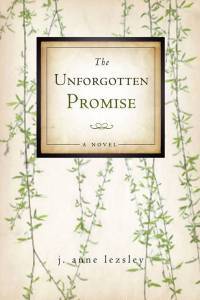 Lezsley graciously agreed to allow me to practice my interview skills on her. A brief review of both the venue and the reading will follow in a separate post later this week.
Lezsley graciously agreed to allow me to practice my interview skills on her. A brief review of both the venue and the reading will follow in a separate post later this week.
*First of all, who is J. Anne Lezsley? Tell us a bit about yourself and what you write. Feel free to share any social media sites, links to Amazon/CreateSpace, or photos.
Well, the name J. Anne Lezsley is a nom de plume, because I didn’t want to publish under my real name. Primary reason being Proverbs 4:23 – Guard your heart. So much of my heart is invested in what I write. I’ve gotta keep that safe from critics, some of whom are closer than I’d like. However, Anne is my real given middle name. I needed something close enough that I would remember to answer to it!
About me? Maybe that’s a question better directed to my friends… Umm… I love writing the things that people struggle with inwardly and interpersonally meaning in relationship, more than external stuff. But at the same time, I’ve been given good reviews from readers on my metaphors/similes and my scenic descriptions. I love playing with words in general, and assembling them artfully. Whatever comes out of that is what I write. I went through a poetry phase a few years ago – free-verse – and I can still rock a mean Shakespearean sonnet with all the rules of the form abided-by.
I don’t have a huge social media or online presence, which is probably not a good thing. The book has pages on CreateSpace and Amazon, and I have a FaceBook page:
https://www.createspace.com/5262112
www.facebook.com/J.AnneLezsley
*What is the genre of your novel?
Oh, this is a tough one! (laughing) I’m debating with friends, yet, about it. Some of them insist that it’s a romance, but I hate that label because of the characteristics implied by most books in that genre. Besides, everybody keeps their clothes on! But, I do have to concede that some people who aren’t married at the beginning of the story, are by the end. In terms of characteristic elements, it’s got a little bit of a lot of things. There is a love story, I can’t deny that; the backstory is a little bit post-apocalyptic; and I can’t not call it a Christian story when God has a speaking character role.
*The Unforgotten Promise is set in the future. How does that setting contribute to the plot? Were there any specific challenges to writing in a futuristic setting?
Well, what the future time setting enabled me to do is cheat, actually. Because of the post-semi-apocalyptic backstory, it enabled me to throw backward so that things look more like the Old West. Think 1860s, westward expansion, Pony Express days, sort of thing. Hence the horse-and-wagon travel, stone streets within the Settlements, and manual labor trades, such as carpentry, stonemasonry, smithing, and so forth, as well as the agricultural elements. Things they would be required to rely on after an upheaval would literally deny them physical access to the industry for more modern equivalents. But due to the 22nd century placement, I was also able to give them things such as geothermal heating and cooling technology, solar thermal cell tech, insulated concrete form construction (which, by the way, is that “new building method” which was such a big deal in chapter 17), indoor plumbing, modern appliances (and, for the men, I would wager some tools), and some electronics. It allows me to cherry-pick and cobble together the cool stuff and the convenient stuff into a collage that blends two really disparate eras.
The great and freeing thing about writing something set in the future is that we don’t know what the future will look like. Think about “Back to the Future”. We’re in 2015 now, but there are no hoverboards, trends from the 1980s have finally been let to die, and the “Jaws” franchise quit after the fourth film. It was completely off-base, but we still love it as a modern classic. It proves that there’s no onus to project accurately for thirty, or one hundred and thirty, years from now, when writing fiction if you tell a good story. It’s very liberating to have those fetters off so that I can focus on my characters and the plot of the story itself.
*Describe your writing process.
Processes might be a better way to say it. It really depends. For one, as a general rule, I write to music. Especially with something like this story. There’s a very particular cadence to the narrative and the speech and the language, and using the same music by the same composer helps me maintain that consistently, since music is incredibly mathematical. Also, I’ve heard other writers say they let their characters tell them their stories. For me, it’s a bit more than that at times. The characters sort of run amok, and I take it all in and note down what happens. Don’t get me wrong, I do get to intentionally write, sometimes; it’s just that the other happens, as well.
And when something is, for lack of a better word, ‘downloaded’ from God, it’s very much like stream-of-consciousness writing, and it’s all I can do to keep up and get the words on the page in the correct order. Figuring out any peripheral stage blocking, background action, dramatic emphasis or window dressing all gets added in on a second pass-through, after I’m sure I’ve got it all down intact. I had a day once like that, where in 8 hours I produced and/or finished 13 chapters and then later that evening had absolutely no memory of any of what I had written. A week later I reopened those documents and read them for literally the first time, ever. It was wild. It also taught me a lesson about how much the Type-A, OCD mind in me will edit what I write, six times before it hits the page for the first time, which is potentially detrimental to the ‘creating’ part of the creative process.
*Is there a type of scene (love scene, action, dialogue, etc.) that is more difficult for you to write?
Tough one. In the case of this story/series, I’d have to say it’s the scenes that involve horses. I don’t know anything about horses. Fortunately, a friend of mine, one of my editors, does. Between her and Google, I had bases covered. Otherwise, a lot of the scenes that you see either wouldn’t exist, or would have far less detail or, lamentably, wrong detail.
Emotionally charged scenes, action scenes, visual scenic descriptions, conversational dialogue, witty banter, all of those in their turns are not too much of a problem. Give me a horse and I’m lost.
*If you could cast your characters for the film adaptation of your novel, who would play your main characters?
Guilty pleasure confession: I’ve already done this long ago. It helped me to have a visible frame of reference when attempting to write the visual descriptions of their features. I have an entire (and growing) Pinterest board. How many would you like? These are my “Dream Team” choices, if I could cast anyone I wanted.
For Caeleigh, I chose an actress named Lauren Ambrose. She is, most importantly, not too pretty for the role. Given the conversation that Cae and Elizabeth have in chapter 3, that’s rather crucial.
Speaking of Elizabeth, for my favorite short and sassy blonde, I chose Jenna Coleman. She won me immediately in one of the first episodes of ‘Doctor Who’ I saw that she was in, called “The Snowmen”; it reminded me of the sass level required of a woman who would be handling a guy like Peter for the rest of her life.
Andrew, I based on a fictional character from a television series from 1989. Obviously, the actor from that role isn’t going to be able to play a 35-year-old anymore. Something put Zachary Levi on my radar a while back, and it was a tenuous casting choice at first… but after the last few episodes of the final season of ‘Chuck’ and a Hallmark Channel flick (yes, I confess to watching the latter of those sometimes), I have solidified the choice. I posted a video clip to my FaceBook page of a performance that really felt like Andrew’s white-knuckled prayers.
For Thomas, I chose Jay Ryan. From stuff I’ve seen him in, I know he has the chops for the emotional gamut that Thomas goes through over the course of the story.
And though he isn’t a main character, I’d like to say that I have chosen Ernie Hudson for Marcus, just because, yes, I cast a Ghostbuster! I think he has an awesome laugh, and that’s one of the first things we see from Marcus, so it’s gotta be a memorable one.
*What has been your biggest obstacle to being published? Your biggest encouragement?
The biggest obstacle, initially, since I chose to self-publish, was not knowing anything about the process. As I learn more and more about it, and I find myself surrounded by people who do know the process and can help me through it, now the challenge is that I’m entirely on my own when it comes to promotion and so forth. It’s a huge leap of faith.
The biggest encouragement has been people like you, who have done what I’m doing, before I’ve done it, who are willing to advise and instruct me. Also the people in my life who simply cheer me on every step of the way, telling me to hang in there and stay the course, and reminding me of the things that God has been promising for years that He means to do with this book that are beyond and outside of my own life.
And some non-writing questions:
*What were you like as a child? Did you have a favorite toy or game?
First off, I love this question. Totally unexpected. Thank you.
I had a creative imagination, even when I was young. I would watch films and TV shows and spin off my own story lines from what I had seen. And I was embarrassed by what I gravitated toward. That, I think, is the thing I regret most now, looking backward. If that storycrafting creativity had been fostered I might have been a different person, but as a kid I had this sense that there were expectations on me to be a certain kind of person, and I wasn’t fitting that mold, already. So I tried to wedge in there and suppress what I was and make my creative nature behave. I’m sure it’s coming out in my characters now, all that repressed energy.
Outside of a fondness for Legos, I don’t remember a particular toy or game, but I remember favorite books. Shel Silverstein’s “The Giving Tree” was a prominent one. I remember when I was fairly young, the copy in my hometown public library had gotten vandalized – scribbled with really badly with an ink pen. I made my mother take me to go buy the library a new copy. After it was donated, they let me keep the old, ruined one. I still have it. It’s in awful shape, because thereafter someone in my house decided to start coloring in the illustrations with markers, but I now own a first-edition copy. Another was “Too Many Lollipops” by Robert Quackenbush. I loved the wackiness of that story, the fact that the principal character was a duck and the ironic juxtaposition of that with the author’s name, plus a series of alliterations and fantastic illustrations. I tracked down a copy on ebay a few years ago, because I’m pretty sure I wore out my childhood copy entirely.
*Do you have any pets?
I do. I have a 15-year-old cat who is insanely anthropomorphic and a little bit OCD. He’s also a closet Trekkie.
*Do you have any recurring dreams or nightmares?
Funny you should ask. The Unforgotten Promise actually started with recurring dreams. I had told God I wanted to write, but that I didn’t have a story and needed Him to give me one. That night or the next, I had this really bizarre dream, and then another the night after. Then the two repeated for days – well, nights – in tandem, with cinematic clarity and vividness. They’re the exact scenes/images of Caeleigh Bonding with Andrew then running away from him and Peter running into the burning meetinghouse. Thanks to a sleep disorder that wakes me mid-REM cycle, I still have visual memories of those dreams, and that was in December of 2011.


June 1, 2015
Guest Post: February Grace
First of all, tell us a bit about yourself and what you write. (Feel free to include any links to Amazon or to your blog/social media sites.)
FG: I’m February Grace, and I’m from Michigan, where it is cold more of the time than I would like. I write mostly romances of the fantasy persuasion; and have just published my fifth novel with Booktrope, a dark, time-travel fantasy/romance called WISHING CROSS STATION. Its official release date is June 2nd: it can be found on Amazon in eBook and print, as an eBook for Nook, with print from BN and eBook from iTunes to follow. 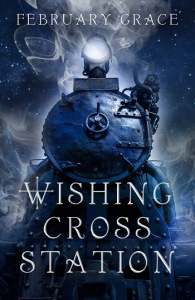
All the information you could want about my books is available on my blog, Love Letters from Jupiter, which can be found at www.februarywriter.blogspot.com You can also always find me on Twitter @februarygrace .
~*~
Who or what first inspired you to become an author?
FG: I’ve been asked this question several times lately, and it finally dawned on me the real answer is that being an early reader (before the age of three) is really what inspired me to become an author.
My Grandmother and I were very close, and she taught me to read by first using a book called Mickey Mouse’s Picnic (which I still have, tattered though it is.) I naturally went from there and took to the idea of creating adventures for my favorite toys before I could write them down.
Then in the fourth grade I was assigned to watch clips of fairy tales on the projector in the library (a great privilege to be trusted with it alone!) and then rewrite the endings. After that I was always writing something, be it poetry, sci-fi stories inspired by those that fascinated me like Star Wars did, or teenage romances full of angst and tears.
Charlotte Bronte’s Jane Eyre was the book that made me fall in love with the art of language, though. I was fifteen when I first read it, and it just swept me away. Tennyson’s poetry inspired me as well, and also such diverse and different voices such as sci-fi genius Douglas Adams.
Inspiration came from lots of places but always led me back to one thing: words.
Do you do a lot of research in your writing? What was the most unusual thing you have come across in your research?
FG: Since most of my books are fantasy books, I didn’t have to do a lot of research because I was building my own mythology. The new book, though, was a different story; and I took a day trip last fall in which I researched details about trains, railroads of the 1800s and how the Stationmaster and his family would have lived by visiting a local historical theme park that is considered to be one of the best in the country.
I took hundreds of photographs, I took video of the sound of the actual, running 1880’s steam engine to remember what it sounded like. I rode the train and breathed deeply of the amazing aroma of the smoke it created. It was an amazing, inspiring day.
I think one of the most interesting, and perhaps unusual, thing I came across in my research was visiting an actual, preserved General Store from that time period at the historical park. It had more than 5000 artifacts from back in the day there, everything from delicate glassware to women’s shoes and the Postmaster’s desk and accoutrements. I was fascinated. It really was like stepping back in time, and it helped me so much as I sat down to write about that time period for Wishing Cross Station.
What has been your biggest obstacle in getting to where you are now? Your biggest encouragement?
FG: My health has definitely been my biggest obstacle to anything in my life. I’ve never been healthy, and I found out at last at age 38 that I have a rare genetic condition that is destroying the connective tissue in my body. This caused me to go blind in my thirties, and I only have limited vision now after six complicated eye surgeries. Without special glasses, I am legally blind and always be, only seeing light and motion.
The limitations on the use of my eyesight (reading is a real strain, always) have led me to get creative at times in how I wrote and finished my novels; but I am sure that all my trials and tribulations health-wise have added a dimension to some of my characters they never would have had otherwise.
Still another, and perhaps the greatest challenge I face is living with Bipolar Disorder, OCD and PTSD. There are times when I cannot write at all because of the medications I take for these disorders, and those are very trying times for my soul. One block lasted a year and a half and I wondered if I’d ever be able to write again. It was terrifying.
So, I don’t and can’t write on a schedule or set writing goals with dates in mind like other writers do. When I’m manic, I write a lot, quickly. Then the stories are refined in editing later when my mind has quieted down.
I also had the most amazing editor on Wishing Cross Station, Laura Bartha, who was just incredible and so helpful. Between her skills and those of my amazing proofreader, who happens to be a bestselling author named Jennifer Gracen, this story has been in good hands from start to finish and I am so grateful to everyone who has been a part of bringing Keigan’s story to life.
The greatest encouragement to me has been a handful of people who believed in me even when I didn’t; and also the drive of my character’s voices in my head, trying to tell their stories. They reminded me that if I didn’t tell them, then no one else would, and that was huge incentive to get their tales down onto the page.
And a couple non-writing questions:
Did you have a favorite toy as a child? Do you still have it?
FG: I did and I do! The most special of all was a stuffed Paddington bear who went with me everywhere I went, including on vacations to as far away as Florida and Puerto Rico—twice! He’s looking sad but I still adore him. I also still have some dolls from my childhood, Barbies and my favorites, Darci dolls. Also still have a Star Wars action figure or two from my originals—sadly the whole set didn’t survive the rigors of play even though I was careful with them. I’ll never forget the day Princess Leia’s head fell off. I was devastated.
Do you have any recurring dreams or nightmares?
FG: I do, but they are too dark and difficult to talk about. The dreams are hopes for the future to dear to be put into words, and the nightmares… because of the PTSD, sometimes the images from them follow me into the daylight and try to oppress me there as well and it’s a difficult thing to cope with. I am grateful to have a great team of doctors and professionals looking out for me; without them I just don’t know where I’d be now. Well, I know where I’d most likely be and it wouldn’t be where I am now. They have my unending, sincere gratitude.
Thank you so much for hosting me today!


May 26, 2015
Mug Shots
Like most writers, I live on a steady diet of coffee and the occasional hot tea. So naturally, I have a whole collection of mugs to choose from when I need my morning (or afternoon, or after dinner) caffeine fix. Just for fun today, I thought I’d showcase a few of my favorite mugs.
1. This is probably the first mug I actually bought for myself. 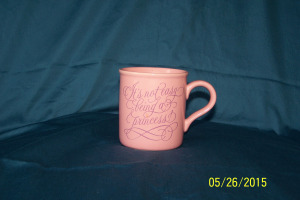 I got it at Boscov’s at the Susquehanna Valley Mall when I was a freshman in college. I had been following the Royal Family since Prince Charles and Lady Diana married in 1981, and if memory serves me correctly, at the time I bought this mug, I was still working on forgiving Prince Andrew for choosing Sarah Ferguson over me. But I still held high hopes of being someone’s princess someday, even though I knew it was a hard, thankless job. :)
I got it at Boscov’s at the Susquehanna Valley Mall when I was a freshman in college. I had been following the Royal Family since Prince Charles and Lady Diana married in 1981, and if memory serves me correctly, at the time I bought this mug, I was still working on forgiving Prince Andrew for choosing Sarah Ferguson over me. But I still held high hopes of being someone’s princess someday, even though I knew it was a hard, thankless job. :)
2. I received this mug as a gift from my college roommate and her sister when I got my teaching degree from Lock Haven University.  They obviously knew my offbeat sense of humor and found this mug to be both affirming and amusing. What’s really funny is that during my seminary days a decade later, I found a similar one for pastors online. No, I didn’t buy that one.
They obviously knew my offbeat sense of humor and found this mug to be both affirming and amusing. What’s really funny is that during my seminary days a decade later, I found a similar one for pastors online. No, I didn’t buy that one.
3. This is another gift.  I taught Grammar and Writing with the local homeschool cooperative one year, and one of my students went on a missions trip to Colombia just before Christmas break. He brought back a bag of Colombian coffee and tucked it into this mug. It’s not a fancy mug, and it’s not clever, but I think of this student whenever I pull it from the cupboard.
I taught Grammar and Writing with the local homeschool cooperative one year, and one of my students went on a missions trip to Colombia just before Christmas break. He brought back a bag of Colombian coffee and tucked it into this mug. It’s not a fancy mug, and it’s not clever, but I think of this student whenever I pull it from the cupboard.
4. These mugs came with me when we cleaned out my parents’ belongings after my mom died eight years ago.  I had bought this set of mugs for my parents’ anniversary when I was nine or ten. They cost all of a dollar each, and another set of mugs was probably the last thing they needed, but for some reason I liked the colors and the designs. I don’t know that I ever saw them use these, but I often do. Like the previous mug, these remind me of my parents whenever I sip my morning coffee from them.
I had bought this set of mugs for my parents’ anniversary when I was nine or ten. They cost all of a dollar each, and another set of mugs was probably the last thing they needed, but for some reason I liked the colors and the designs. I don’t know that I ever saw them use these, but I often do. Like the previous mug, these remind me of my parents whenever I sip my morning coffee from them.
5. Obviously this one is a souvenir.  I got this one free because we stayed at Oceans 7 Motel in Ocean City, NJ. That was quite the memorable vacation for a couple reasons. First of all, my not-quite-two-year-old son, who refused to wear his shoes on a wooden walkway, got an enormous splinter in his foot. Not wanting to find an urgent care facility, I numbed his foot with an ice pack so I could remove the splinter myself. The second reason this was such a memorable vacation was that we arrived at the beach on the heels of an offshore hurricane (can’t recall which one, maybe Hanna?). We weren’t allowed out on the beach for a day, but we got close enough to watch the storm passing off the coast.
I got this one free because we stayed at Oceans 7 Motel in Ocean City, NJ. That was quite the memorable vacation for a couple reasons. First of all, my not-quite-two-year-old son, who refused to wear his shoes on a wooden walkway, got an enormous splinter in his foot. Not wanting to find an urgent care facility, I numbed his foot with an ice pack so I could remove the splinter myself. The second reason this was such a memorable vacation was that we arrived at the beach on the heels of an offshore hurricane (can’t recall which one, maybe Hanna?). We weren’t allowed out on the beach for a day, but we got close enough to watch the storm passing off the coast.
Do you have a favorite mug or mugs? Share a photo and the story behind it below.



